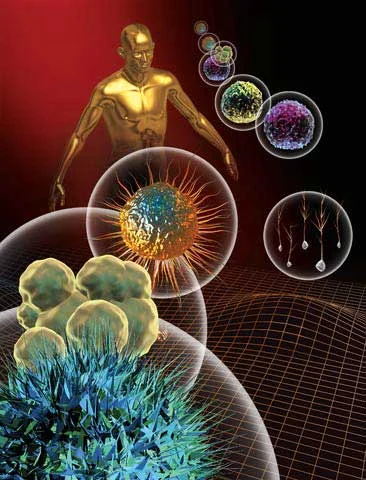Chandigarh, Sept 8: The human mind has long fascinated philosophers, poets and scientists alike. In recent decades, advances in psychology and neuroscience have revealed that much of what we call thought, emotion or personality is closely tied to chemistry inside the body. Hormones and neurotransmitters — the natural messengers of the brain — continually shape how we think, feel and respond to the world around us.
The brain itself is a dynamic organ. Far from being a fixed machine, it is capable of remarkable change. When a person learns a new skill, recalls a memory or experiences stress, networks of neurons light up and alter their connections. Psychologists describe this capacity as plasticity — the ability of the mind to adapt. It means human beings are never truly static; the mind is constantly remolding itself in response to experience.
Hormones play a central role in this process. Cortisol, the stress hormone, floods the body during moments of fear or pressure, sharpening focus but also exhausting the system if levels remain high. Oxytocin, often called the bonding hormone, deepens trust and attachment in moments of intimacy or compassion. Dopamine surges when we anticipate reward, driving motivation, while serotonin contributes to feelings of balance and well-being. These chemicals, released at just the right time, are not abstract forces but powerful agents that steer daily behavior.
Psychologists note that individual differences in hormone levels and brain chemistry help explain why people react so differently to the same situation. Where one person feels energized by pressure, another may feel overwhelmed. Where one seeks novelty and risk, another leans toward security. This diversity of response is not simply shaped by upbringing or environment; it is also written in the body’s chemistry.
Personality itself, often seen as the sum of habits and traits that define a person, emerges from the dialogue between biology and experience. Genetics provide a framework, but life events sculpt the final form. A child growing up in an unpredictable environment may produce more cortisol, becoming hyper-alert to change. Someone surrounded by steady support may develop greater resilience through different hormonal balances. Neither outcome is fixed forever; therapy, relationships and even new habits can recalibrate the system.
In exploring the workings of the human mind, scientists emphasize that biology does not strip people of agency. The interplay of neurons and hormones sets a stage, but conscious thought, culture and personal choices fill in the performance. What is striking is how the invisible chemistry of the body leaves traces on something as visible as human behavior — from a sudden burst of creativity to the quiet strength of endurance.
The science of psychology shows that the mind is not only a place of logic and memory but also a field where chemicals, experiences and personality meet. Each person carries a unique blend, which explains why no two lives — or minds — are ever the same.
In studying the human mind, researchers are careful to draw a line between determinism and possibility. Biology sets the stage: neurons fire, hormones surge, chemical pathways open and close. But the performance that follows is far from scripted. At the heart of psychology is the recognition that conscious thought, cultural influences and personal decisions interact constantly with this biology, turning raw potential into lived experience.
This interplay is most visible when chemistry leaves its imprint on behavior in unexpected ways. A flood of dopamine may light up the brain in anticipation of reward, but what form that reward takes — a new idea, a long night of painting, or the thrill of a gamble — is directed by culture, upbringing and individual will. Similarly, cortisol can prime the body to react under stress, yet how one channels that heightened state — as panic, resilience, or decisive action — depends on experience and choice.
Scientists argue that this dynamic balance is what makes human beings creative rather than mechanical. Chemistry fuels the emotion, but personality gives it direction. It is why two people facing the same heartbreak may take radically different paths: one might collapse into despair, while another may find the strength to write poetry, begin activism or build a new life. The invisible machinery of hormones is not the final word; it is a language the mind learns to speak in different dialects, depending on who we are and where we come from.
What makes this tension so striking is its subtlety. The chemistry of the body is invisible — hormones cannot be seen, neurotransmitters cannot be touched — yet their influence is stamped onto something profoundly visible: human behavior. A burst of creativity, a flare of anger, the slow burn of endurance in difficult times — all are evidence of an internal conversation between biology and will.
Far from reducing people to their chemicals, this perspective broadens the story of human freedom. It shows that choice is real, but it does not exist in a vacuum. Every decision is made on a stage already lit by biology. The power lies in how individuals, consciously or not, choose to perform upon it.

